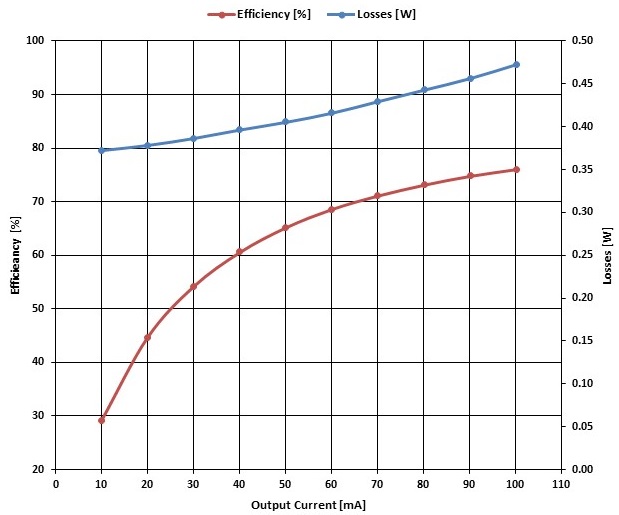TIDT382 February 2024
- 1
- Description
- Features
- Applications
- 1Test Prerequisites
- 2Testing and Results
- 3Waveforms
- 4Summary
- 5References
2.1.2 SN6507-Q1 Efficiency Graph
 Figure 2-2 SN6507-Q1 Efficiency at 15
VIN
Figure 2-2 SN6507-Q1 Efficiency at 15
VINNote: The efficiency graph shows only up to 100mA load current. The
SN6507-Q1 device has 0.5A rated power switches. Maximum efficiency of this device
can be achieved in the range of 250mA–300mA load current.